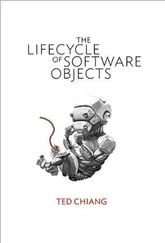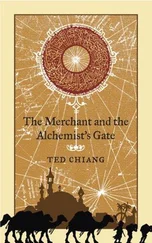Fieldhurst read his expression. ‘You realize why not all the sperm samples from donors of the same age produced the same number of generations: some lineages are approaching their end faster than others. For a lineage in which the men consistently father children late in life, five generations might mean over two centuries of fertility, but there are undoubtedly lineages that have reached their end already.’
Stratton imagined the consequences. ‘The loss of fertility will become increasingly apparent to the general populace as time passes. Panic may arise well before the end is reached.’
‘Precisely, and rioting could extinguish our species as effectively as the exhaustion of generations. That is why time is of the essence.’
‘What is the solution you propose?’
‘I shall defer to Dr. Ashbourne to explain further,’ said the earl.
Ashbourne rose and instinctively adopted the stance of a lecturing professor. ‘Do you recall why it was that all attempts to make automata out of wood were abandoned?’
Stratton was caught off guard by the question. ‘It was believed that the natural grain of wood implies a form in conflict with whatever we try to carve upon it. Currently there are efforts to use rubber as a casting material, but none have met with success.’
‘Indeed. But if the native form of wood were the only obstacle, shouldn’t it be possible to animate an animal’s corpse with a name? There the form of the body should be ideal.’
‘It’s a macabre notion; I couldn’t guess at such an experiment’s likelihood of success. Has it ever been attempted?’
‘In fact it has: also unsuccessfully. So these two entirely different avenues of research proved fruitless. Does that mean there is no way to animate organic matter using names? This was the question I left Trinity in order to pursue.’
‘And what did you discover?’
Ashbourne deflected the question with a wave of his hand. ‘First let us discuss thermodynamics. Have you kept up with recent developments? Then you know the dissipation of heat reflects an increase in disorder at the thermal level. Conversely, when an automaton condenses heat from its environment to perform work, it increases order. This confirms a long-held belief of mine that lexical order induces thermodynamic order. The lexical order of an amulet reinforces the order a body already possesses, thus providing protection against damage. The lexical order of an animating name increases the order of a body, thus providing motive power for an automaton.
‘The next question was, how would an increase in order be reflected in organic matter? Since names don’t animate dead tissue, obviously organic matter doesn’t respond at the thermal level; but perhaps it can be ordered at another level. Consider: a steer can be reduced to a vat of gelatinous broth. The broth comprises the same material as the steer, but which embodies a higher amount of order?’
‘The steer, obviously,’ said Stratton, bewildered.
‘Obviously. An organism, by virtue of its physical structure, embodies order; the more complex the organism, the greater the amount of order. It was my hypothesis that increasing the order in organic matter would be evidenced by imparting form to it. However, most living matter has already assumed its ideal form. The question is, what has life but not form?’
The elder nomenclator did not wait for a response. ‘The answer is, an unfertilized ovum. The ovum contains the vital principle that animates the creature it ultimately gives rise to, but it has no form itself. Ordinarily, the ovum incorporates the form of the foetus compressed within the spermatozoon that fertilizes it. The next step was obvious.’ Here Ashbourne waited, looking at Stratton expectantly.
Stratton was at a loss. Ashbourne seemed disappointed, and continued. ‘The next step was to artificially induce the growth of an embryo from an ovum, by application of a name.’
‘But if the ovum is unfertilized,’ objected Stratton, ‘there is no preexisting structure to enlarge.’
‘Precisely.’
‘You mean structure would arise out of a homogenous medium? Impossible.’
‘Nonetheless, it was my goal for several years to confirm this hypothesis. My first experiments consisted of applying a name to unfertilized frog eggs.’
‘How did you embed the name into a frog’s egg?’
‘The name is not actually embedded, but rather impressed by means of a specially manufactured needle.’ Ashbourne opened a cabinet that sat on the worktable between two of the microscope stations. Inside was a wooden rack filled with small instruments arranged in pairs. Each was tipped with a long glass needle; in some pairs they were nearly as thick as those used for knitting, in others as slender as a hypodermic. He withdrew one from the largest pair and handed it to Stratton to examine. The glass needle was not clear, but instead seemed to contain some sort of dappled core.
Ashbourne explained. ‘While that may appear to be some sort of medical implement, it is in fact a vehicle for a name, just as the more conventional slip of parchment is. Alas, it requires far more effort to make than taking pen to parchment. To create such a needle, one must first arrange fine strands of black glass within a bundle of clear glass strands so that the name is legible when they are viewed end-on. The strands are then fused into a solid rod, and the rod is drawn out into an ever-thinner strand. A skilled glassmaker can retain every detail of the name no matter how thin the strand becomes. Eventually one obtains a needle containing the name in its cross section.’
‘How did you generate the name that you used?’
‘We can discuss that at length later. For the purposes of our current discussion, the only relevant information is that I incorporated the sexual epithet. Are you familiar with it?’
‘I know of it.’ It was one of the few epithets that was dimorphic, having male and female variants.
‘I needed two versions of the name, obviously, to induce the generation of both males and females.’ He indicated the paired arrangement of needles in the cabinet.
Stratton saw that the needle could be clamped into the brass framework with its tip approaching the slide beneath the microscope; the knurled wheels presumably were used to bring the needle into contact with an ovum. He returned the instrument. ‘You said the name is not embedded, but impressed. Do you mean to tell me that touching the frog’s egg with this needle is all that’s needed? Removing the name doesn’t end its influence?’
‘Precisely. The name activates a process in the egg that cannot be reversed. Prolonged contact of the name had no different effect.’
‘And the egg hatched a tadpole?’
‘Not with the names initially tried; the only result was that symmetrical involutions appeared in the surface of the egg. But by incorporating different epithets, I was able to induce the egg to adopt different forms, some of which had every appearance of embryonic frogs. Eventually I found a name that caused the egg not only to assume the form of a tadpole, but also to mature and hatch. The tadpole thus hatched grew into a frog indistinguishable from any other member of the species.’
‘You had found a euonym for that species of frog,’ said Stratton.
Ashbourne smiled. ‘As this method of reproduction does not involve sexual congress, I have termed it “parthenogenesis”.’
Stratton looked at both him and Fieldhurst. ‘It’s clear what your proposed solution is. The logical conclusion of this research is to discover a euonym for the human species. You wish for mankind to perpetuate itself through nomenclature.’
Читать дальше











